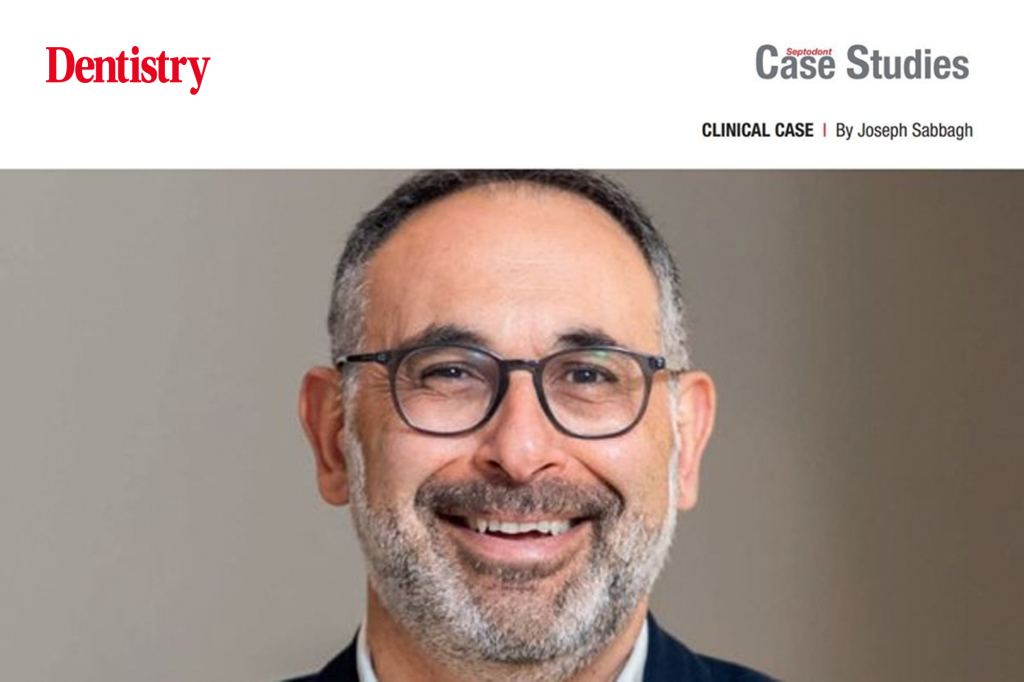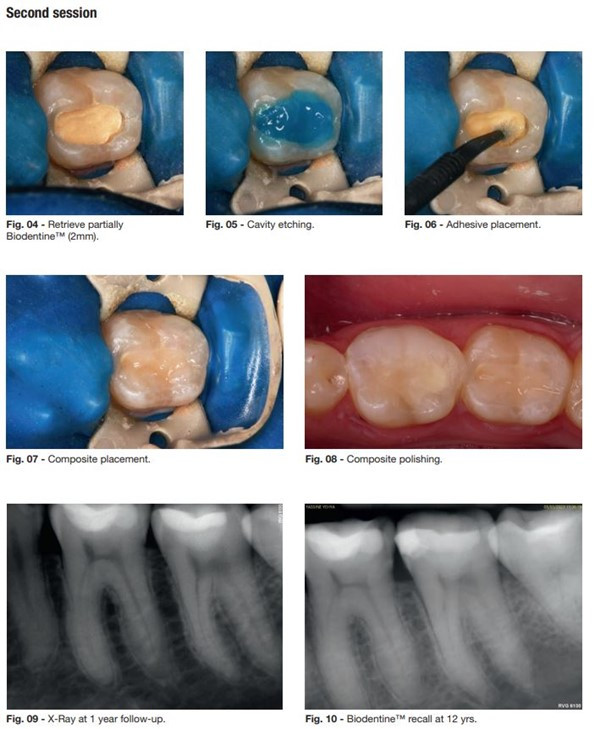
Joseph Sabbagh discusses the benefits of bio-bulk procedure using the Biodentine system for maintaining pulp vitality.
Introduction
The aim of this case study is to discuss two clinical situations treated with Biodentine and Biodentine XP with a 12-year follow-up. This emphasises the evolution and improvement made to the Biodentine system.
Methods
The protocol of using Biodentine as a bio-bulk capping material in one or two sessions is explained. Additionally, the different clinical steps to follow.
Discussion
The concept of bio-bulk fill is indicated in deep cavities, reducing the risks of pulpal damage and maintaining its vitality.
Vital pulp therapy
Biodentine XP, while keeping the same formulation and indications as Biodentine, made the application technique and handling much easier for the dentist.
Management of deep caries and preservation of pulp vitality represent daily challenges for the dentist and the patient concerned with avoiding root canal treatment. The American Academy of Pediatric Dentistry defines vital pulp therapy as ‘the placement of a protective barrier over exposed or unexposed pulp to induce the formation of a dentinal bridge and maintain its vitality and function’.
Direct and indirect pulp capping
The main techniques used to maintain pulp vitality in permanent teeth are direct and indirect pulp capping. Two groups of materials are used. The first is based on calcium hydroxide and the second is based on tricalcium silicate.
A recent meta-analysis compared the two types in deep cavities with exposed pulp. Better long-term outcomes were achieved using the tricalcium silicatebased materials MTA and Biodentine. Biodentine has been used for more than 12 years for different indications in deciduous and permanent teeth. It shows high success rates at different recall times.
Biodentine XP was recently launched, offering the same composition in a pre-dosed, ready-to-mix capsule format. The system includes a mixer and a dispensing gun, ensuring a uniform consistency and easy delivery directly into the cavity. According to the clinical indication and quantity needed, two capsule volumes are available. Namely, Biodentine XP 200 and Biodentine XP 500.
On the other hand, the bulk-filling approach has gained wide popularity in dentistry in recent years. It can be approached with inert bulk-fill materials, like the composites that are used in layers of 4 mm, or ‘bio-bulk fill’ materials mainly based on tricalcium silicate.
Bio-bulk filling
The bio-bulk filling approach involves the application of a bioactive cement in the deep part of the cavity. This will interact with the pulp and induce repair and bridge formation, thus maintaining pulp vitality and avoiding root canal treatment.
The application is completed with the placement of a 1.5-2 mm layer of conventional resin composite or a bulk-fill resin composite on the top. This can be placed either during the first or the second session. Bulk-fill resin composites allow the application of layers up to 5 mm thick, aiming to shorten the restorative procedure time in posterior cavities and making it easier for dentists.
Today, more than fifty bulk-filling systems from different companies are available on the market. They are classified in four categories relying on different technologies. For example, flowable resin composite, sonic energy, fibre-based resin composite, and high-density filler composites. The aim of this clinical paper is to present the concept of ‘bio-bulk fill’ in cases of deep cavities using Biodentine XP, reducing the risk of pulpal damage and maintaining pulp vitality.





